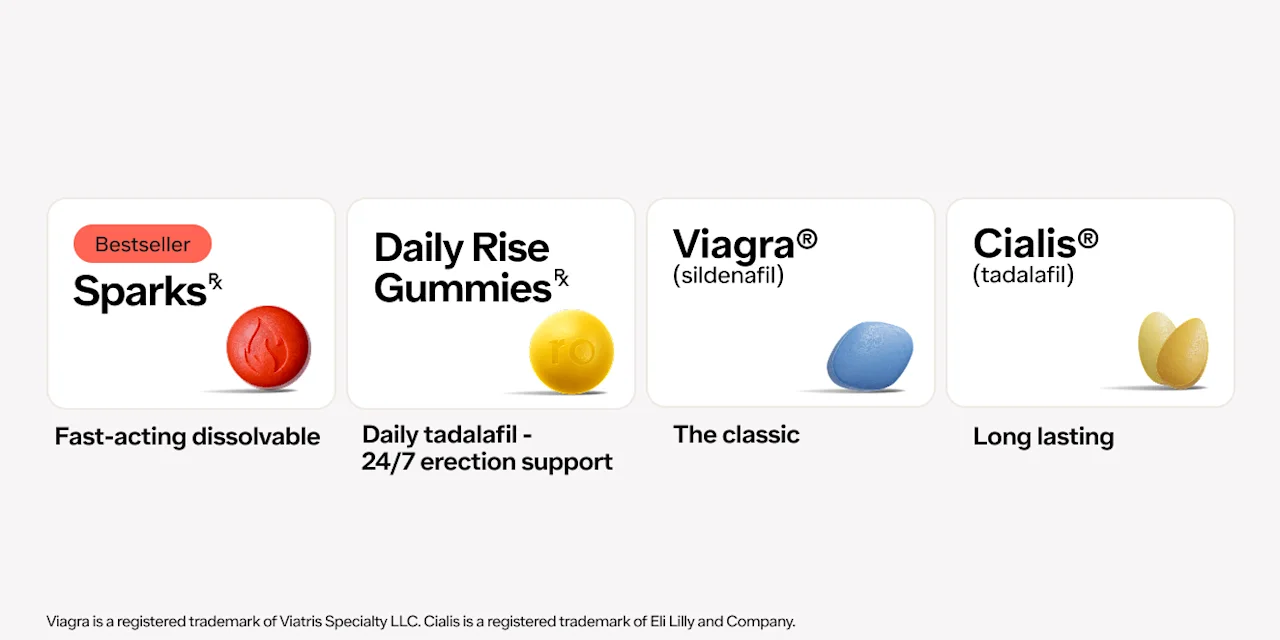Here's what we'll cover
Here's what we'll cover
What do you think about when you hear the word wave? It could be an ocean wave rushing past you while you swim. Perhaps it’s an acoustic soundwave pulsing through the speakers as you listen to your favorite song. Or maybe it’s shockwaves that make the ground shake during an earthquake.
And while they might seem drastically different, every kind of wave is a ripple of energy that affects the surrounding environment. It might surprise you to learn that healthcare providers also use waves to treat certain medical conditions including kidney stones, scars, and even erectile dysfunction (ED). Enter GAINSWave.
What is GAINSWave?
Whether you’ve experienced ED or not, you may have searched for ways to have harder, longer-lasting erections. There are many options that can help in this department, including prescription medications like Viagra (sildenafil), Cialis (tadalafil), or Levitra. There are also surgical procedures such as penile implants and injections like the Priapus shot.
GAINSWave therapy is an alternative type of ED treatment that uses acoustic waves (or sound waves) to heal erectile tissue. This method is also called low-intensity extracorporeal shockwave therapy, or LI-ESWT for short.
How it works
Using LI-ESWT in medicine is not a new concept. Healthcare providers used it for many years before researchers considered it a possible ED therapy in 2010.
The science behind it is based on the biology of erections. Erections rely on several different things, including adequate blood flow. If you don’t have enough blood flowing into the penis, you can’t get a solid erection. This is also why people with conditions like heart disease and high blood pressure (which affect the blood vessels) are more likely to experience ED.
GAINSWave therapy works by applying low-intensity sound waves directly to the outside of the penis. These waves produce tiny areas of trauma that stimulate healing and rejuvenate the surrounding tissue. The procedure claims to break down scar tissue and micro-plaques (clumps of fiber and debris) that accumulate in the blood vessels, allowing more blood to flow through the penis.
Acoustic waves also stimulate the tissue to encourage the formation of new blood vessels, increasing blood flow in the penis further (Gruenwald, 2013).
Does acoustic wave therapy improve ED?
In one of the earliest clinical trials on LI-ESWT for ED treatment, a small study of 20 people found that ED symptoms improved after, with changes lasting as long as six months (Vardi, 2010).
In another more recent small trial, researchers found participants who underwent LI-ESWT had increased blood flow to the penis one month after treatment (Lurz, 2020). Another small study concluded that even people who experienced ED for more than two years still saw improvements in erections within three months after getting acoustic wave therapy (DeOliveira, 2019).
But the research isn’t all positive. Some researchers found LI-ESWT was no better at treating ED than a placebo (Fojecki, 2017). Since research into this treatment for erectile dysfunction is limited, there isn’t enough information yet to support its widespread use (Sokolakis, 2019).
Benefits of GAINSWave
GAINSWave therapy might sound like an attractive option for people seeking a drug-free, non-invasive treatment for ED. It’s also the only non-surgical treatment option that addresses the root cause of ED since it directly improves blood flow by breaking down plaque and stimulating the growth of new blood vessels.
Like the Priapus shot, LI-ESWT relies on the body’s healing abilities rather than drugs or a therapeutic device. This means there are minimal known side effects. In one study, participants with ED were treated with LI-ESWT and underwent follow-up five years after treatment. None of the study participants reported side effects (like penis pain or deformities), and the treatment was still around 40% effective at that time (Chung, 2021).
Disadvantages of GAINSWave
Healthcare providers have used LI-ESWT in medicine for many years. The U.S. Food and Drug Administration (FDA) has approved it to treat specific conditions like kidney stones.
However, it has not been FDA-approved to treat erectile dysfunction. Another disadvantage of GAINSWave is cost. The procedure is significantly more expensive than prescription medications, costing anywhere from $2,600 to $4,700 (Weinberger, 2021).
Even though a non-invasive treatment for ED sounds ideal, it may be some time before we see it used routinely. And since it’s not used routinely, it’s still difficult to determine if GAINSWave is effective, long-lasting, or better than other treatments. Some healthcare providers do offer LI-ESWT though, so a provider can help you determine whether or not you would benefit from GAINSWave.
DISCLAIMER
If you have any medical questions or concerns, please talk to your healthcare provider. The articles on Health Guide are underpinned by peer-reviewed research and information drawn from medical societies and governmental agencies. However, they are not a substitute for professional medical advice, diagnosis, or treatment.
Viagra Important Safety Information: Read more about serious warnings and safety info.
Cialis Important Safety Information: Read more about serious warnings and safety info.
Abu-Ghanem, Y., Kitrey, N. D., Gruenwald, I., Appel, B., & Vardi, Y. (2014). Penile low-intensity shock wave therapy: a promising novel modality for erectile dysfunction. Korean Journal of Urology , 55 (5), 295–299. doi:10.4111/kju.2014.55.5.295. Retrieved from https://www.ncbi.nlm.nih.gov/pmc/articles/PMC4026654/
Ayala, H., Cuartas, J., & Cleves, D. C. (2017). Impact on the Quality of Erections after Completing a Low-Intensity Extracorporeal Shock Wave Treatment Cycle on a Group of 710 Patients. Advances in Urology . doi:10.1155/2017/1843687. Retrieved from https://pubmed.ncbi.nlm.nih.gov/29430250/
Capogrosso, P., Frey, A., Jensen, C., Rastrelli, G., Russo, G. I., Torremade, J., Albersen, M., Gruenwald, I., Reisman, Y., & Corona, G. (2019). Low-Intensity Shock Wave Therapy in Sexual Medicine-Clinical Recommendations from the European Society of Sexual Medicine (ESSM). The Journal of Sexual Medicine , 16 (10), 1490–1505. doi:10.1016/j.jsxm.2019.07.016. Retrieved from https://pubmed.ncbi.nlm.nih.gov/31447380/
Chung, E., & Cartmill, R. (2021). Evaluation of Long-Term Clinical Outcomes and Patient Satisfaction Rate Following Low Intensity Shock Wave Therapy in Men With Erectile Dysfunction: A Minimum 5-Year Follow-Up on a Prospective Open-Label Single-Arm Clinical Study. Sexual Medicine , 9 (4). doi:10.1016/j.esxm.2021.100384. Retrieved from https://pubmed.ncbi.nlm.nih.gov/34126432/
Clavijo, R. I., Kohn, T. P., Kohn, J. R., & Ramasamy, R. (2017). Effects of Low-Intensity Extracorporeal Shockwave Therapy on Erectile Dysfunction: A Systematic Review and Meta-Analysis. The Journal of Sexual Medicine , 14 (1), 27–35. doi:10.1016/j.jsxm.2016.11.001. Retrieved from https://pubmed.ncbi.nlm.nih.gov/27986492/
De Oliveira, P. S., De Oliveira, T. R., Nunes, Á., Martins, F., & Lopes, T. (2019). Low-intensity shock wave therapy for erectile dysfunction and the influence of disease duration. Archivio Italiano di Urologia e Andrologia , 90 (4), 276–282. doi:10.4081/aiua.2018.4.276. Retrieved from https://pubmed.ncbi.nlm.nih.gov/30655637/
Dong, L., Chang, D., Zhang, X., Li, J., Yang, F., Tan, K., et al. (2019). Effect of Low-Intensity Extracorporeal Shock Wave on the Treatment of Erectile Dysfunction: A Systematic Review and Meta-Analysis. American Journal of Men's Health , 13 (2). doi:10.1177/1557988319846749. Retrieved from https://www.ncbi.nlm.nih.gov/pmc/articles/PMC3607492/
Fojecki, G. L., Tiessen, S., & Osther, P. J. (2017). Effect of Low-Energy Linear Shockwave Therapy on Erectile Dysfunction-A Double-Blinded, Sham-Controlled, Randomized Clinical Trial. The Journal of Sexual Medicine , 14 (1), 106–112. doi:10.1016/j.jsxm.2016.11.307. Retrieved from https://pubmed.ncbi.nlm.nih.gov/27938990/
Gruenwald, I., Appel, B., Kitrey, N. D., & Vardi, Y. (2013). Shockwave treatment of erectile dysfunction. Therapeutic Advances in Urology , 5 (2), 95–99. doi:10.1177/1756287212470696. Retrieved from https://www.ncbi.nlm.nih.gov/pmc/articles/PMC3607492/
Katz, J. E., Clavijo, R. I., Rizk, P., & Ramasamy, R. (2020). The Basic Physics of Waves, Soundwaves, and Shockwaves for Erectile Dysfunction. Sexual Medicine Reviews , 8 (1), 100–105. doi:10.1016/j.sxmr.2019.09.004. Retrieved from https://pubmed.ncbi.nlm.nih.gov/31735700/
Lu, Z., Lin, G., Reed-Maldonado, A., Wang, C., Lee, Y. C., & Lue, T. F. (2017). Low-intensity Extracorporeal Shock Wave Treatment Improves Erectile Function: A Systematic Review and Meta-analysis. European Urology , 71 (2), 223–233. doi:10.1016/j.eururo.2016.05.050. Retrieved from https://pubmed.ncbi.nlm.nih.gov/27321373/
Lurz, K., Dreher, P., Levy, J., McGreen, B., Piraino, J., Brevik, A., Edwards, D., & Belkoff, L. H. (2020). Low-Intensity Shockwave Therapy in the Treatment of Erectile Dysfunction. Cureus , 12 (11), e11286. doi:10.7759/cureus.11286. Retrieved from https://pubmed.ncbi.nlm.nih.gov/33274160/
Muncey, W., Sellke, N., Kim, T., Mishra, K., Thirumavalavan, N., & Loeb, A. (2021). Alternative Treatment for Erectile Dysfunction: a Growing Arsenal in Men's Health. Current Urology Reports , 22 (2), 11. doi:10.1007/s11934-020-01023-9. Retrieved from https://pubmed.ncbi.nlm.nih.gov/33420972/
Porst, H. (2021). Review of the Current Status of Low Intensity Extracorporeal Shockwave Therapy (Li-ESWT) in Erectile Dysfunction (ED), Peyronie's Disease (PD), and Sexual Rehabilitation After Radical Prostatectomy With Special Focus on Technical Aspects of the Different Marketed ESWT Devices Including Personal Experiences in 350 Patients. Sexual Medicine Reviews , 9 (1), 93–122. doi:10.1016/j.sxmr.2020.01.006. Retrieved from https://pubmed.ncbi.nlm.nih.gov/32499189/
Rizk, P. J., Krieger, J. R., Kohn, T. P., & Pastuszak, A. W. (2018). Low-Intensity Shockwave Therapy for Erectile Dysfunction. Sexual Medicine Reviews , 6 (4), 624–630. doi:10.1016/j.sxmr.2018.01.002. Retrieved from https://pubmed.ncbi.nlm.nih.gov/29576441/
Sokolakis, I., Dimitriadis, F., Teo, P., Hatzichristodoulou, G., Hatzichristou, D., & Giuliano, F. (2019). The Basic Science Behind Low-Intensity Extracorporeal Shockwave Therapy for Erectile Dysfunction: A Systematic Scoping Review of Pre-Clinical Studies. The Journal of Sexual Medicine , 16 (2), 168–194. doi:10.1016/j.jsxm.2018.12.016. Retrieved from https://pubmed.ncbi.nlm.nih.gov/30770067/
Weinberger, J. M., Shahinyan, G., Yang, S. C., Shahinyan, R., Mills, J. N., & Eleswarapu, S. V. (2021). MP36-13 Trends in Marketing, Pricing, and Deployment of Shockwave Therapy for Erectile Dysfunction in US Major Metropolitan Cities. The Journal of Urology , 206(Supplement 3), e640-e641. Retrieved from https://www.auajournals.org/doi/pdf/10.1097/JU.0000000000002045.13
Vardi, Y., Appel, B., Jacob, G., Massarwi, O., & Gruenwald, I. (2010). Can low-intensity extracorporeal shockwave therapy improve erectile function? A 6-month follow-up pilot study in patients with organic erectile dysfunction. European Urology, 58 (2), 243–248. doi:10.1016/j.eururo.2010.04.004. Retrieved from https://pubmed.ncbi.nlm.nih.gov/20451317/
Young Academic Urologists Men's Health Group, Fode, M., Hatzichristodoulou, G., Serefoglu, E. C., Verze, P., & Albersen, M. (2017). Low-intensity shockwave therapy for erectile dysfunction: is the evidence strong enough?. Nature reviews. Urology , 14 (10), 593–606. doi:10.1038/nrurol.2017.119. Retrieved from https://pubmed.ncbi.nlm.nih.gov/28741629/










